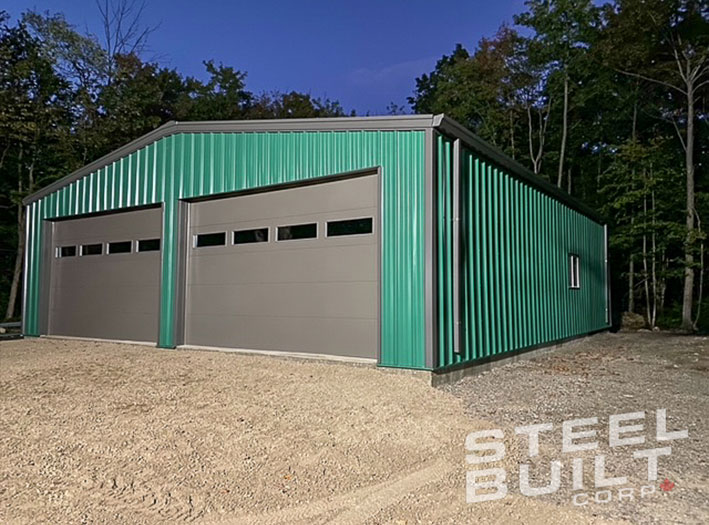
Introduction:
In the world of aviation, having a reliable and secure plane hangar is essential for the safety, maintenance, and longevity of your aircraft. A plane hangar provides the necessary protection from the elements and offers a controlled environment for routine maintenance and inspections. Whether you’re a private aircraft owner, a commercial operator, or a part of an aviation organization, understanding the benefits and features of plane hangars is crucial. This blog explores everything you need to know about plane hangars, including their benefits, types, and how to choose the right one for your needs.
The Importance of a Plane Hangar
1. Protection from the Elements
One of the primary functions of a plane hangar is to protect aircraft from adverse weather conditions. Exposure to rain, snow, hail, and UV rays can cause significant damage to an aircraft’s exterior and interior components. A plane hangar provides a safe haven, shielding your aircraft from these harmful elements and ensuring its longevity.
2. Enhanced Security
A plane hangar offers enhanced security for your aircraft. It protects against theft, vandalism, and unauthorized access. Modern hangars can be equipped with advanced security systems, including surveillance cameras, alarms, and access control systems, to ensure that your aircraft is safe and secure at all times.
3. Maintenance and Repair Space
Having a dedicated space for maintenance and repairs is crucial for keeping an aircraft in optimal condition. A plane hangar provides a controlled environment where routine inspections, maintenance tasks, and repairs can be carried out efficiently and effectively, without the need to worry about weather disruptions.
4. Operational Efficiency
A plane hangar allows for better organization and operational efficiency. With all your tools, equipment, and aircraft stored in one place, you can streamline your maintenance and operation processes, reducing downtime and enhancing productivity.
5. Customization and Adaptability
Plane hangars can be customized to meet specific requirements. Whether you need additional storage space, specialized equipment installations, or specific environmental controls, a plane hangar can be tailored to suit your needs, ensuring maximum functionality and efficiency.
Types of Plane Hangars
1. T-Hangars
T-Hangars are popular among private aircraft owners and smaller aviation operations. These hangars are named for their T-shaped layout, which allows for efficient storage of single aircraft. T-Hangars are cost-effective and provide adequate protection and security for small to medium-sized planes.
2. Box Hangars
Box hangars, also known as rectangular hangars, are versatile and can accommodate a wide range of aircraft sizes. They offer ample space for multiple aircraft, as well as room for maintenance equipment and storage. Box hangars are ideal for commercial operators and organizations with larger fleets.
3. Portable Hangars
Portable hangars are a flexible and cost-effective solution for temporary or remote storage needs. These hangars are typically made from durable, lightweight materials and can be easily assembled and disassembled. Portable hangars are suitable for short-term storage, remote operations, or emergency use.
4. Inflatable Hangars
Inflatable hangars are a modern solution that combines portability with ease of setup. These hangars can be quickly inflated and provide a secure and weather-resistant environment for aircraft storage and maintenance. Inflatable hangars are ideal for rapid deployment in emergency situations or temporary operations.
How to Choose the Right Plane Hangar
1. Assess Your Needs
Before investing in a plane hangar, assess your specific needs. Consider factors such as the size and number of aircraft you need to store, the type of maintenance and operations you conduct, and any additional space requirements for tools, equipment, and personnel.
2. Consider Location and Climate
The location and climate of your operation play a crucial role in selecting the right hangar. Ensure that the hangar you choose is designed to withstand local weather conditions and provides adequate protection for your aircraft. Consider features such as insulation, ventilation, and climate control if you operate in extreme weather conditions.
3. Set a Budget
Establishing a budget is essential for selecting the right plane hangar. Prices can vary based on size, materials, and customization options. Determine what you can afford and look for options that offer the best value within your budget without compromising on quality and functionality.
4. Check Regulatory Requirements
Ensure compliance with local building codes, zoning regulations, and aviation authority requirements before constructing or installing a plane hangar. Some areas may have specific requirements for hangar size, placement, and safety features.
5. Choose a Reputable Supplier
Select a reputable supplier or manufacturer with experience in producing high-quality plane hangars. Look for reviews, ask for recommendations, and compare products and services to ensure you are making an informed decision. A reliable supplier will provide you with a durable, secure, and functional hangar that meets your needs.
6. Plan for Future Expansion
Consider your future needs when choosing a plane hangar. Opt for a design that allows for easy expansion or modifications, ensuring that the hangar can grow with your operation and accommodate additional aircraft or equipment as needed.
Conclusion
A plane hangar is an essential investment for anyone involved in aviation. It provides vital protection, security, and operational efficiency for aircraft storage and maintenance. By understanding your specific needs and carefully selecting the right type of hangar, you can ensure that your aircraft remains in optimal condition and is ready for flight whenever needed.






